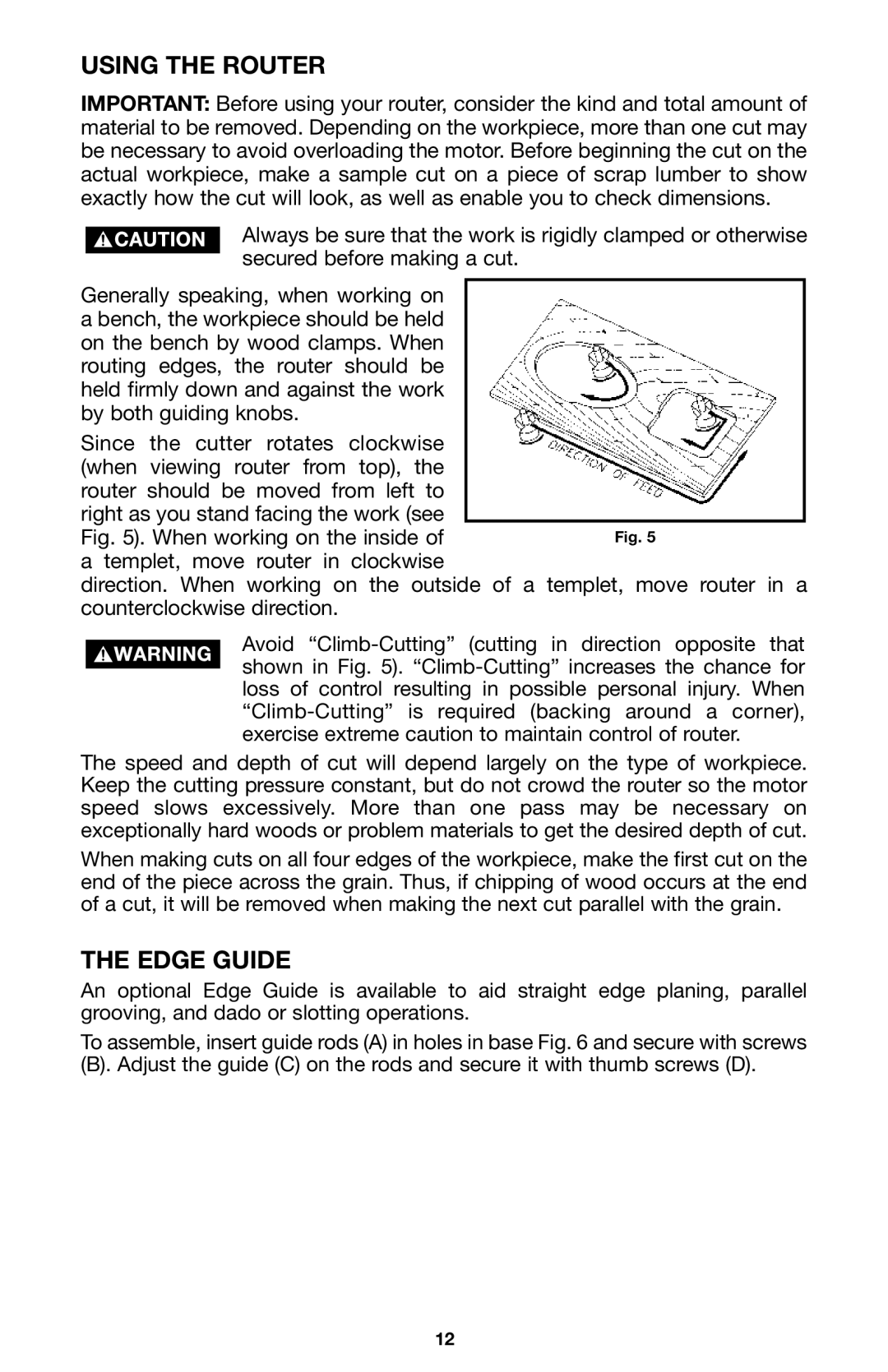
USING THE ROUTER
IMPORTANT: Before using your router, consider the kind and total amount of material to be removed. Depending on the workpiece, more than one cut may be necessary to avoid overloading the motor. Before beginning the cut on the actual workpiece, make a sample cut on a piece of scrap lumber to show exactly how the cut will look, as well as enable you to check dimensions.
Always be sure that the work is rigidly clamped or otherwise secured before making a cut.
Generally speaking, when working on |
|
a bench, the workpiece should be held |
|
on the bench by wood clamps. When |
|
routing edges, the router should be |
|
held firmly down and against the work |
|
by both guiding knobs. |
|
Since the cutter rotates clockwise |
|
(when viewing router from top), the |
|
router should be moved from left to |
|
right as you stand facing the work (see |
|
Fig. 5). When working on the inside of | Fig. 5 |
a templet, move router in clockwise |
|
direction. When working on the outside of a templet, move router in a counterclockwise direction.
Avoid
The speed and depth of cut will depend largely on the type of workpiece. Keep the cutting pressure constant, but do not crowd the router so the motor speed slows excessively. More than one pass may be necessary on exceptionally hard woods or problem materials to get the desired depth of cut.
When making cuts on all four edges of the workpiece, make the first cut on the end of the piece across the grain. Thus, if chipping of wood occurs at the end of a cut, it will be removed when making the next cut parallel with the grain.
THE EDGE GUIDE
An optional Edge Guide is available to aid straight edge planing, parallel grooving, and dado or slotting operations.
To assemble, insert guide rods (A) in holes in base Fig. 6 and secure with screws
(B). Adjust the guide (C) on the rods and secure it with thumb screws (D).
12
